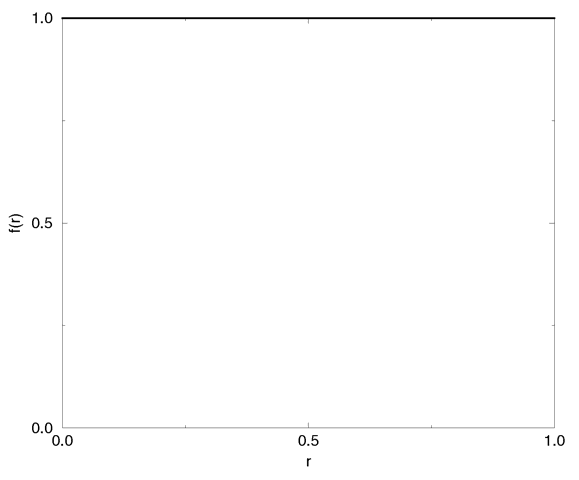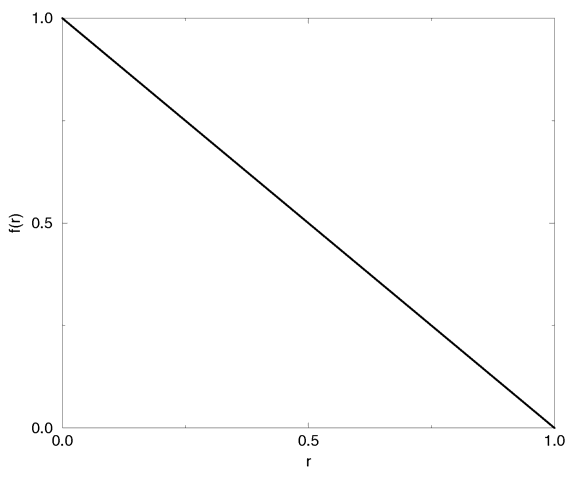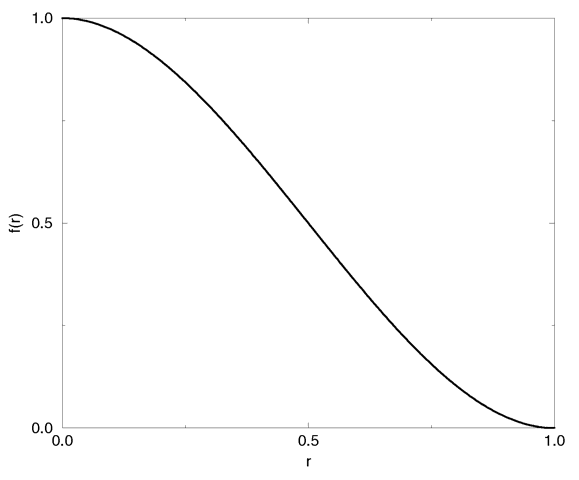Clouds and steams are two of the effects that can be rendered quite realistic by adding enough turbulence.
Section 7.6.4.3.2
Dust
As the ray marches through the dust all light coming from any light sources is accumulated and scattered according to the dust type and the current dust density. Since this light accumulation includes a test for occlusion, other objects may cast shadows into the dust.
The same scattering types that are used with the atmosphere in section "Atmosphere" can be used with the dust (the default type is isotropic scattering). They are:
The Henyey-Greenstein function needs the additional parameter eccentricity that is described in the section about atmosphere. This keyword only applies to dust type 5, the Henyey-Greenstein scattering.
As the ray travels through the density field of an emitting halo the color of the particles in each volume element and their differential transparency is determined from the color map. These intensities are accumulated to get the total color of the density field. This total intensity is added to the light passing through the halo. The background light is attenuated by the total density of the halo.
Since the emitted light is not attenuated it can be used to model effects like fire, explosions, light beams, etc. By choosing a well suited color map those effects can be rendered with a high degree of realism.
Fire is best modeled using planar mapping. Spherical mapping and high turbulence values can be used to create explosions (it's best to use a periodic color map and frequencies larger than one).
Emitting halos do not cast any light on other objects like light sources do, even though they are made up of small, light-emitting particles. In order to make them actually emit light hundreds or thousands of small light sources would have to be used. This would slow down tracing by a degree that would make it useless.
The default mapping type is planar mapping.
Since the mapping takes place in relation to the origin of the world coordinate system the following rule must always be kept in mind: Halo container objects ought to be unit sized objects centered at the origin. They can be transformed later to suit the individuals needs.
The different mapping types are explained in more detail in the following sections.
Values larger than one are clipped to one.
is used to get the interval values. Values larger than one are clipped to one.
is used to get the interval values. Values larger than one are clipped to one.
is used to get the interval values. Values larger than one are clipped to one.
The density function is specified by the following keywords:
The exponent keyword is only used together with the poly density function.
The individual functions f(r) are described in the following sections. They all map the value r(x,y,z) calculated by the density mapping onto a suitable density range between 0 and MAX_VALUE (specified with the keyword max_value).
The constant density function can be used to create a constant particle distribution that is only constrained by the container object.
This is actually a cubic spline.
The exponent is given by the exponent keyword. In case of EXPONENT=0 you'll get a linear falloff.
The color map is specified by:
The differential translucency is stored in the transmittance channel of the map's color entries. A simple example is given by
In this example areas with a low density (small f(r)) will be translucent (large differential translucency of 1=100%) and areas with a high density (large f(r)) will be opaque (small differential translucency of 0=0%). You should note that negative transmittance values can be used to create very dense fields.
In the case of the dust halo the filter channels of the colors in the color map are used to specify the amount of light that will be filtered by the corresponding color map entry. For all other halo types the filter value is ignored.
There is no default color map.
Section 7.6.4.3.3
Emitting
Section 7.6.4.3.4
Glowing
Section 7.6.4.4
Density Mapping
Section 7.6.4.4.1
Box Mapping
Section 7.6.4.4.2
Cylindrical Mapping
Section 7.6.4.4.3
Planar Mapping
Section 7.6.4.4.4
Spherical Mapping
Section 7.6.4.5
Density Function
Section 7.6.4.5.1
Constant
The constant density function.
Section 7.6.4.5.2
Linear
The linear density function.
Section 7.6.4.5.3
Cubic
The cubic density function.
Section 7.6.4.5.4
Poly
The polynomial density function for different exponent values.
Section 7.6.4.6
Halo Color Map
Table Of Contents